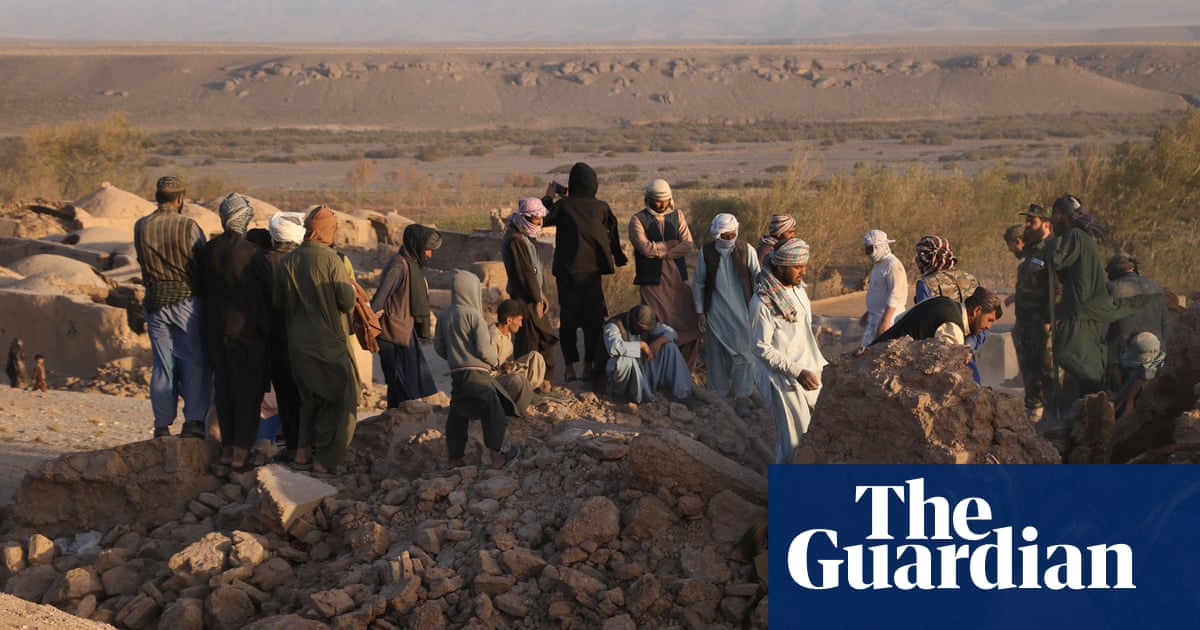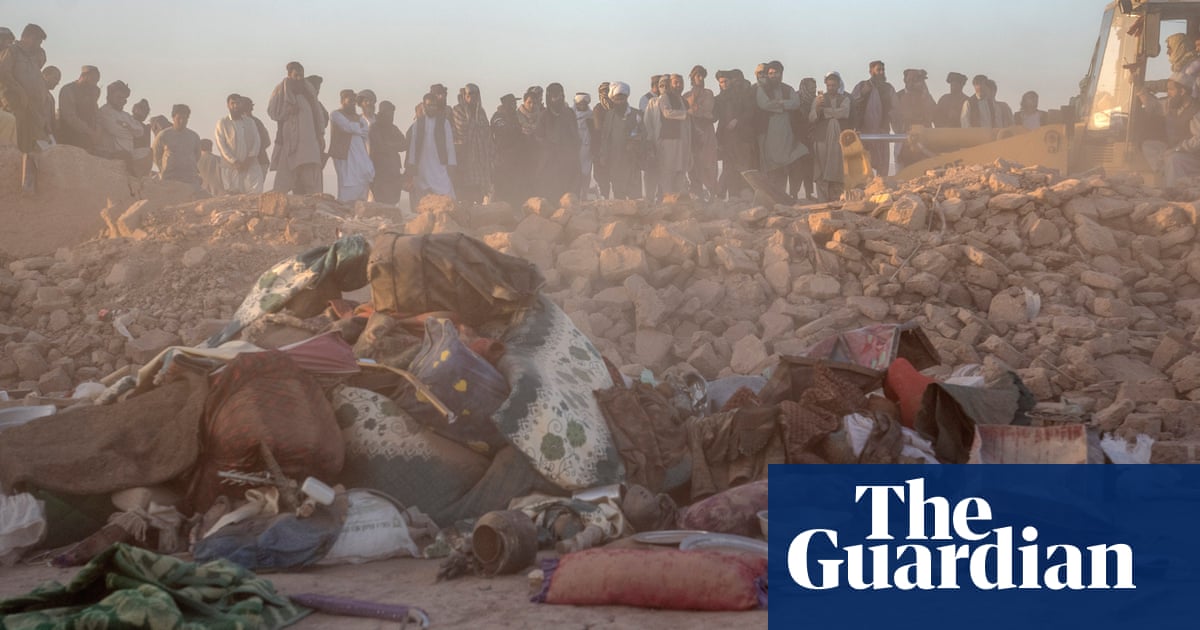
The death toll from a series of earthquakes in western Afghanistan has risen sharply to more than 2,400 people, according to the Taliban government, as rescuers searched for survivors among the ruins of razed villages.
A government spokesperson said that more than 10,000 had been injured,. “Many more people are still under the rubble” he told the Guardian.
Saturday’s magnitude-6.3 quake – followed by eight strong aftershocks – jolted hard-to-reach areas 19 miles (30km) from the provincial capital of Herat, toppling rural homes and sending panicked city dwellers into the streets.
“Twelve villages in Zindah Jan and six in Ghoryan district are completely reduced to rubble. We expect the death toll will rise and efforts are under way to take people out,” the official added. “Rescue teams from Helmand and Kandahar have arrived in Herat.
“The survivors have nothing in the area. They need food, clothes, tents and medicine. The earthquake hit very remote and poor areas. Many of them are refugees who recently arrived back from Iran and Pakistan. We definitely need international help.
“We call on all international aid groups to help us at this time to rescue our countrymen and women’s lives,” another Taliban official said. “Help us in whatever means you can.”
As night fell on Saturday in Sarboland village of Zindah Jan district, an AFP reporter saw dozens of homes ruined near the epicentre of the quakes, which shook the area for more than five hours. Men shovelled through piles of crumbled masonry as women and children waited in the open, with gutted homes displaying personal belongings flapping in the harsh wind.
Herat regional hospital was flooded with injured people from across Herat and nearby provinces. Dozens of people were being treated outside the hospital after the 600-bed hospital reached capacity by the afternoon local time Saturday and the Taliban officials have built a makeshift hospital.
“Vans filled with dead bodies are arriving here each minute,” a medic at Herat hospital told the Guardian. “We are struggling with the very high number of injured people. I have not counted dead bodies. Our morgue is out of capacity.”
Public parks and streets were packed with residents on Saturday night in Herat city after rumours of another powerful earthquake spread on social media.
“People were terrified last night after rumours of another earthquake spread,” Firooz, a resident of Herat, told the Guardian over the phone. “My family and I stayed in a park until five in the morning. Thousands of people spent the night outdoors last night. Only two men in our street stayed there for the safety of people’s belongings. Everyone else was in the park. It was like a nightmare.”
Footage coming out from Herat province shows apocalyptic scenes with villages reduced to rubble and people taking their dead loved ones out of the rubble.
“Dozens of villages are completely destroyed and hundreds of people are under the rubble,” Dawood, a resident of the severely hit Zindah Jan district, told the Guardian. “I took nine dead bodies of my relatives to Herat and I’m on the way back. Roads to many of the villages are damaged. Lots of people would die under the rubble tonight.”
“I can tell you only 50 people are alive in the village of my relatives,” Dawood added. “More than 400 people were living there until this morning. A catastrophe is unfolding here.”
The local governor said “a high number” of people in the district died after more than 10 villages were reduced to rubble. “We call on the people to go and help the [affected] people in these villages,” Noor Ahmad Islamjar said in a clip.
The World Health Organization (WHO) said more than 600 houses had been destroyed or partially damaged across at least 12 villages in Herat province, with 4,200 people affected.
“It was around 11am, and I was shopping at a market when it began,” Esmail, a resident of Herat city, said. “People hurriedly rushed outside. I had barely stepped out, and then another earthquake struck. It was shorter in duration than the previous one. And then yet another followed. That’s when I decided to head home. The next quake hit while I was outside my house, causing a wall to collapse on my 12-year-old cousin.”
Afghanistan is already suffering in the grip of a dire humanitarian crisis, with the widespread withdrawal of foreign aid following the Taliban’s return to power in 2021. In June 2022, a powerful earthquake struck a rugged, mountainous region of in the east of the country, flattening stone and mud-brick homes.
“Some of the injured people are currently housed in a hotel and two schools, which are also accommodating those who have lost their homes and loved ones,” said Herat’s governor, Noor Ahmad Islamjar, during an interview with state TV on Sunday. “Local people helped the affected people very much.”
“We have reached out to some Islamic countries for assistance, and so far only Turkey has promised to provide us with a plane filled with medicine and tents. Iran has also expressed its readiness to assist us,” he said.
“With winter approaching, the affected areas will soon experience extremely cold conditions. Many families not only have lost their homes but also their main breadwinners. They are in urgent need of immediate aid and suitable shelters,” he added.
The quake was Afghanistan’s deadliest in two decades, killing at least 1,000 people and injuring about 1,500. The country is frequently struck by earthquakes, especially in the Hindu Kush mountain range, which lies near the junction of the Eurasian and Indian tectonic plates.
Herat province – home to more than 3 million people on the border with Iran – has also been hit by a years-long drought that has crippled many already hardscrabble agricultural communities.











